Mac batch image conversion FAQ: How can I “batch convert” images from one image format to another on a Mac, such as BMP to JPG, or PNG to JPG?
As I mentioned in my earlier Mac batch image resizing tutorial, the Mac OS X Automator application is my new best friend. Besides letting you easily batch resize images very easily, the Automator also lets you easily batch create thumbnails for images, and also lets you convert images from one image format to another (BMP to JPG, PNG to JPG, etc.).
Here’s a quick look at how to use the Mac Automator to “batch convert” images from one file format to another, including image file formats like BMP, GIF, JPEG, and PNG.
1) Batch convert image files (JPG, PNG, etc.) on Mac OS X - Start the Mac Automator
In Step 1 of the batch image conversion process, start the Mac Automator application by clicking the Applications icon in the Dock, and then click the Automator icon, which looks like a robot. When the Automator displays a startup dialog, click the "Workflow" icon, and then you'll be presented with an Automator window, like this:
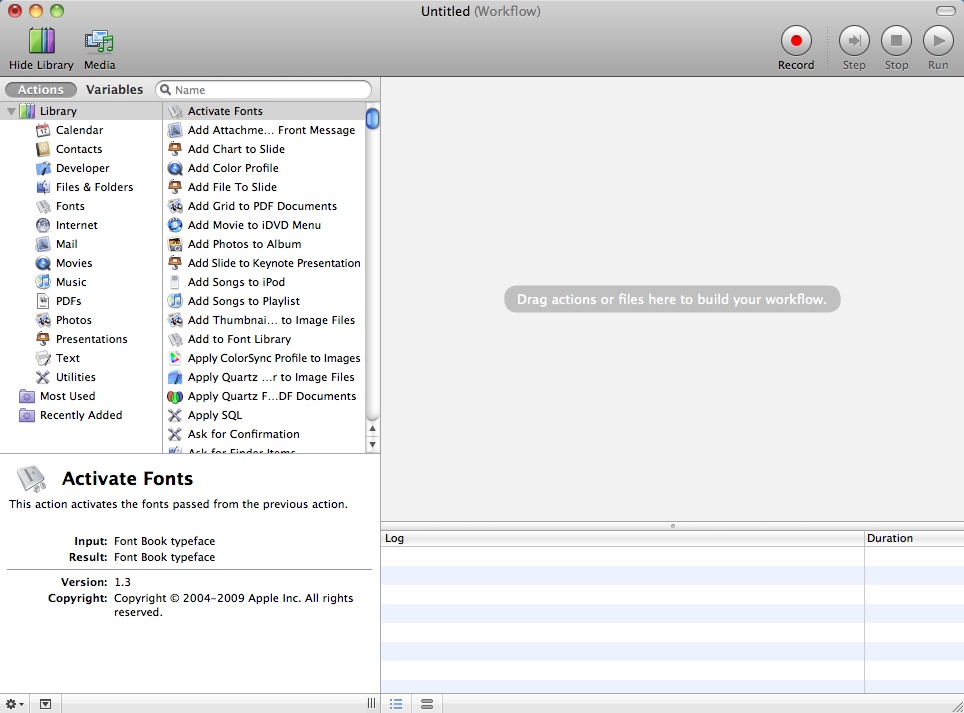
(Note that if you want to see a larger version of any of these images, just right-click the image, and then select "View Image".)
2) Mac batch image conversion: Drag your original images to the Automator
Before proceding any farther -- make a backup of your original images. Things can always go wrong, so if you really like your images, make a backup copy of them in another folder.
After making that backup, open a Mac Finder window, select the image files you want to convert to a new image format, and drag those files to the right side of the Automator window. When you do this, your Automator window will look like this:
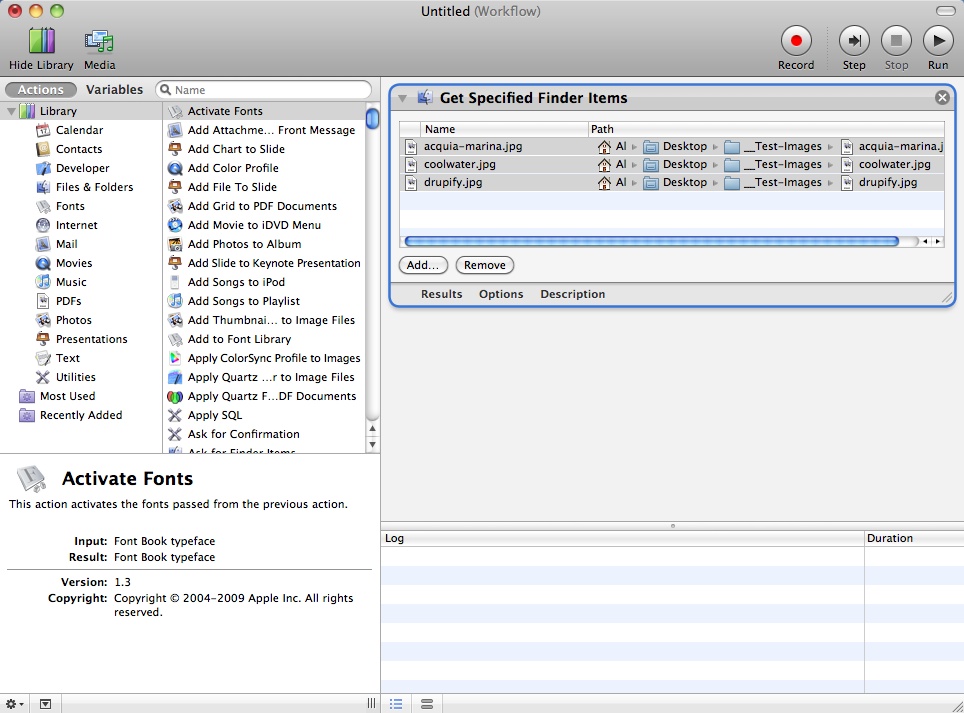
In this case I've added a batch of JPG files, and for the purposes of this example, I want to convert these JPG files to PNG files.
3) Find the Mac Automator "Change Type of Images" action
Next, click the search box on the left side of the Automator window, and type in the phrase "convert". This filters out all the possible Automator actions, so you can easily find the "Change Type of Images" action. This is the "batch convert image format" action we need.
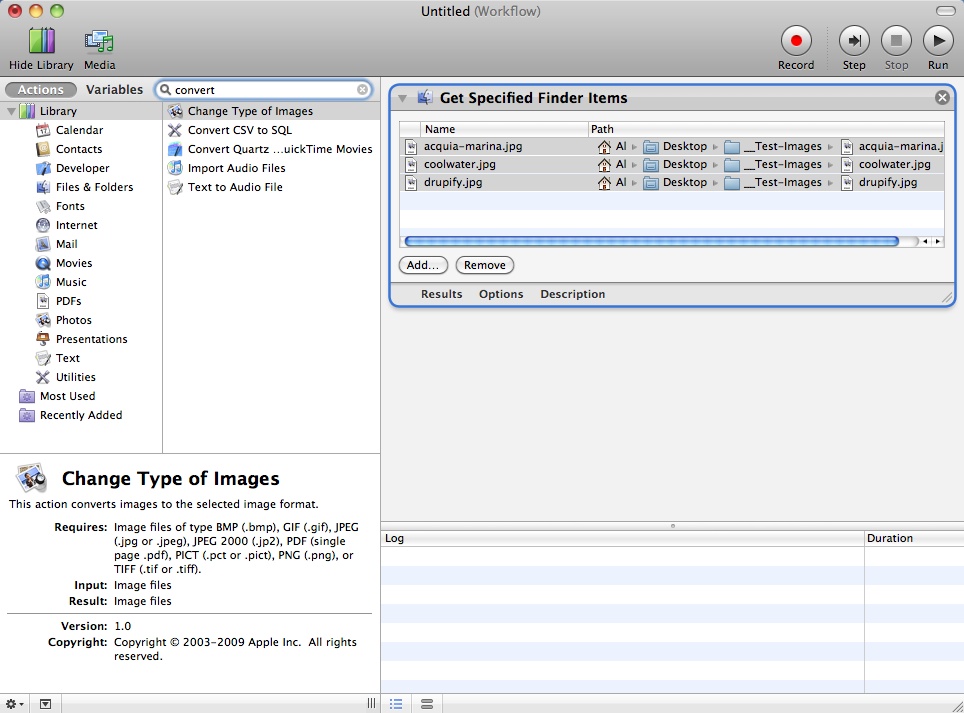
Next, select the Change Type of Images action, and drag it to the gray area on the right side of the Automator window, beneath the list of files you just added. (Or, double-click the Change Type of Images action, if you prefer.)
The Automator will ask if you want to add a "Copy" task to your workflow. This will make a backup copy of your files. If you've already made a backup copy of your files to another folder, this shouldn't be necessary, but you can add this copy task if you prefer. (If you don't want to add this task, just click the "Don't Add" button.)
After adding the "Change Type of Images" action, your Automator window should look like this:
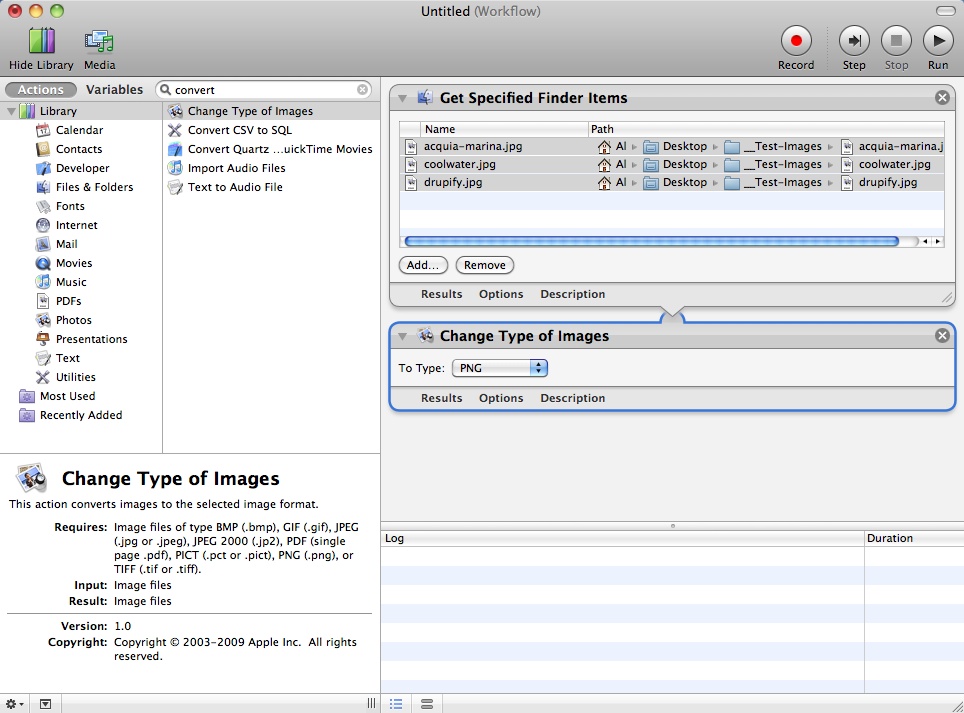
In the "Change Type of Images" panel that was just created, you can now specify the type of image file format you want to create. Again, in my example I'm converting these files from JPG to PNG, so I'll choose PNG in this drop-down list. Other image formats include BMP, JPG, and TIFF, so you can easily convert between these different image formats.
4) Mac batch image conversion: Run your Automator workflow to convert the images
Now, in the last step of this process, just press the Run button in the upper-right corner of the Mac Automator window, and the Automator will begin converting your images from their original image file format to the new image file format you requested.
As the Automator does its work, you'll see output in the Automator "Log" panel in the bottom-right of this window:
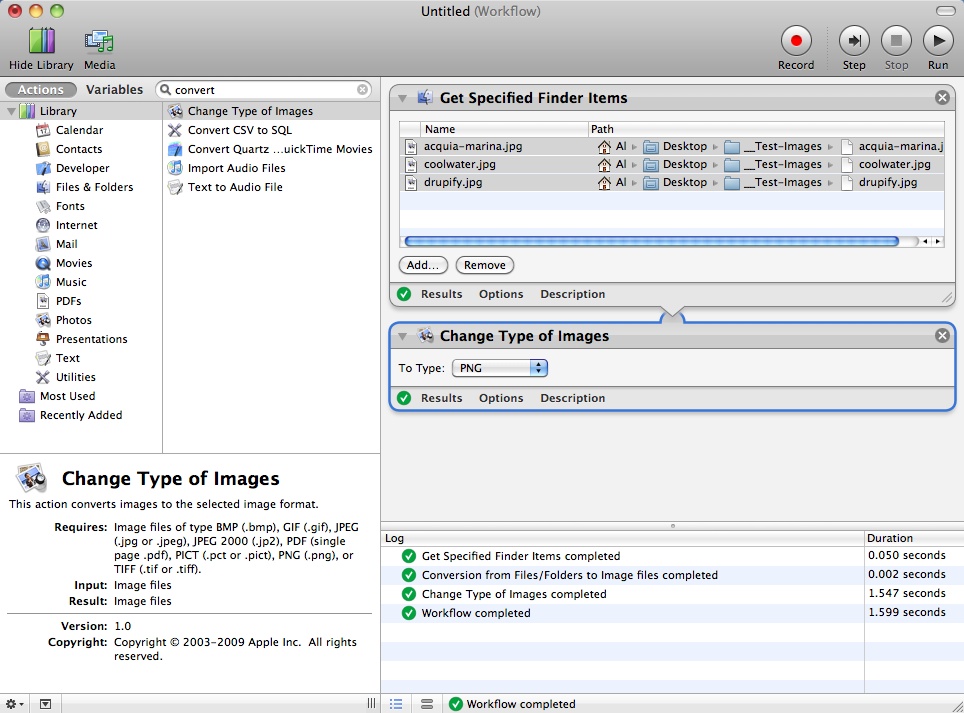
Assuming your Finder window is still open, you'll also see your image files being converted from their old image format to their new image format, from JPG to PNG in my example.
Free Mac batch image conversion (BMP, JPG, PNG) - Summary
I hope this Mac batch image conversion article has been helpful. That's all you have to do to batch convert image files from one image file format to another (i.e., BMP, JPG, PNG, TIF, others). At this point you can just close the Mac Automator, and just press the "Don't Save" button when the Automator asks if you want to save this workflow for future use.



